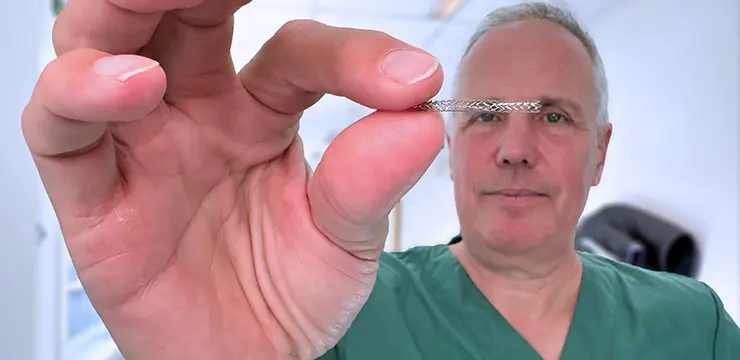Novel method reduces risks for patients suffering from heart attacks

“The results of our study suggest that in the near future we will likely see a new and improved standard treatment for people with cardiovascular diseases,” says David Erlinge, senior consultant in cardiology at Skåne University Hospital, professor at Lund University, and lead author of the Swedish study "Infinity-Swedeheart."
Heart attacks and acute coronary artery problems are common diseases that affect around 30,000 people in Sweden each year. The traditional treatment method is to perform angioplasty and insert a drug-eluting stent, a small metal mesh tube, into the blood vessel.
This method works very well. However, in about two to three per cent of patients, stents annually cause new blood clots or angina. That risk is reduced with the help of a novel type of stent that partially dissolves after six months and opens up like a kind of zipper.
“I am very pleased with the results. It clearly shows that this new type of stent can reduce the risk of further heart attacks and angina in the same vessel,” comments David Erlinge.
Restoring the blood vessel
The reason some patients may experience problems is that traditional stents are rigid and cannot expand like a healthy blood vessel. The new so-called Stent stent, on the other hand, can.
“For six months, it functions like a traditional stent, but then more parts of the stent dissolve, allowing the natural properties of the vessel to be restored. This means that the stent can bend, expand, and pulse—just like a normal, healthy vessel,” continues David Erlinge.


